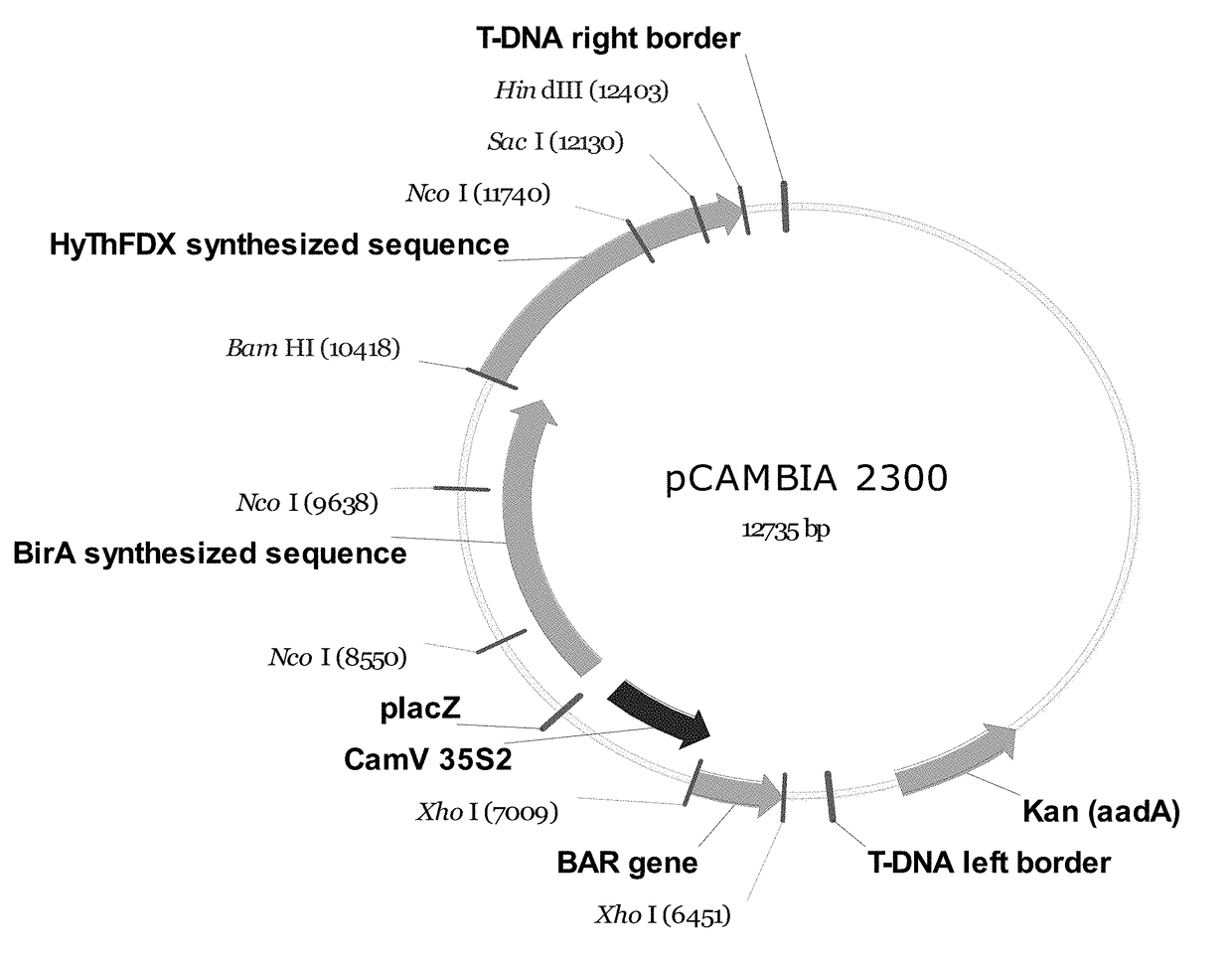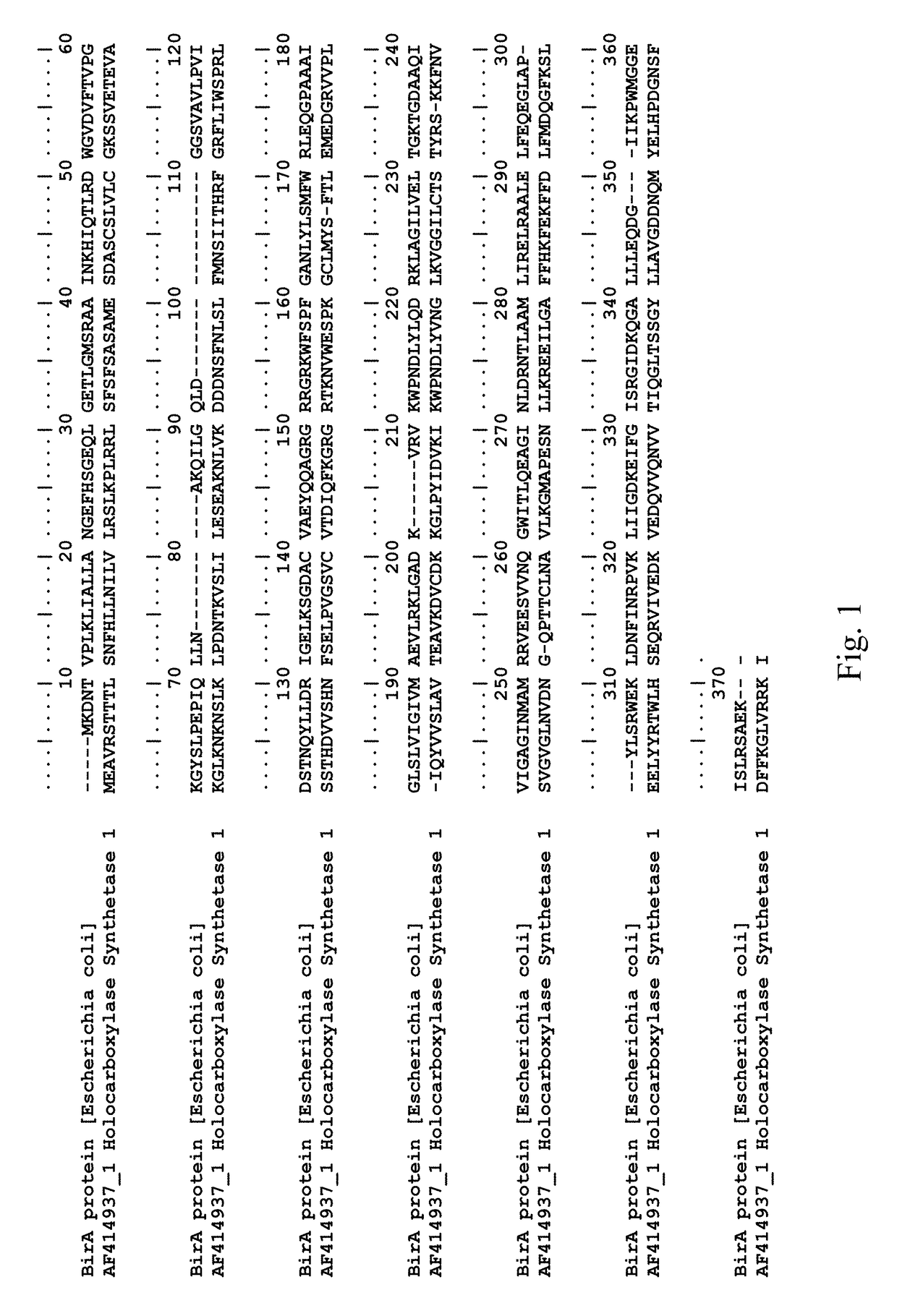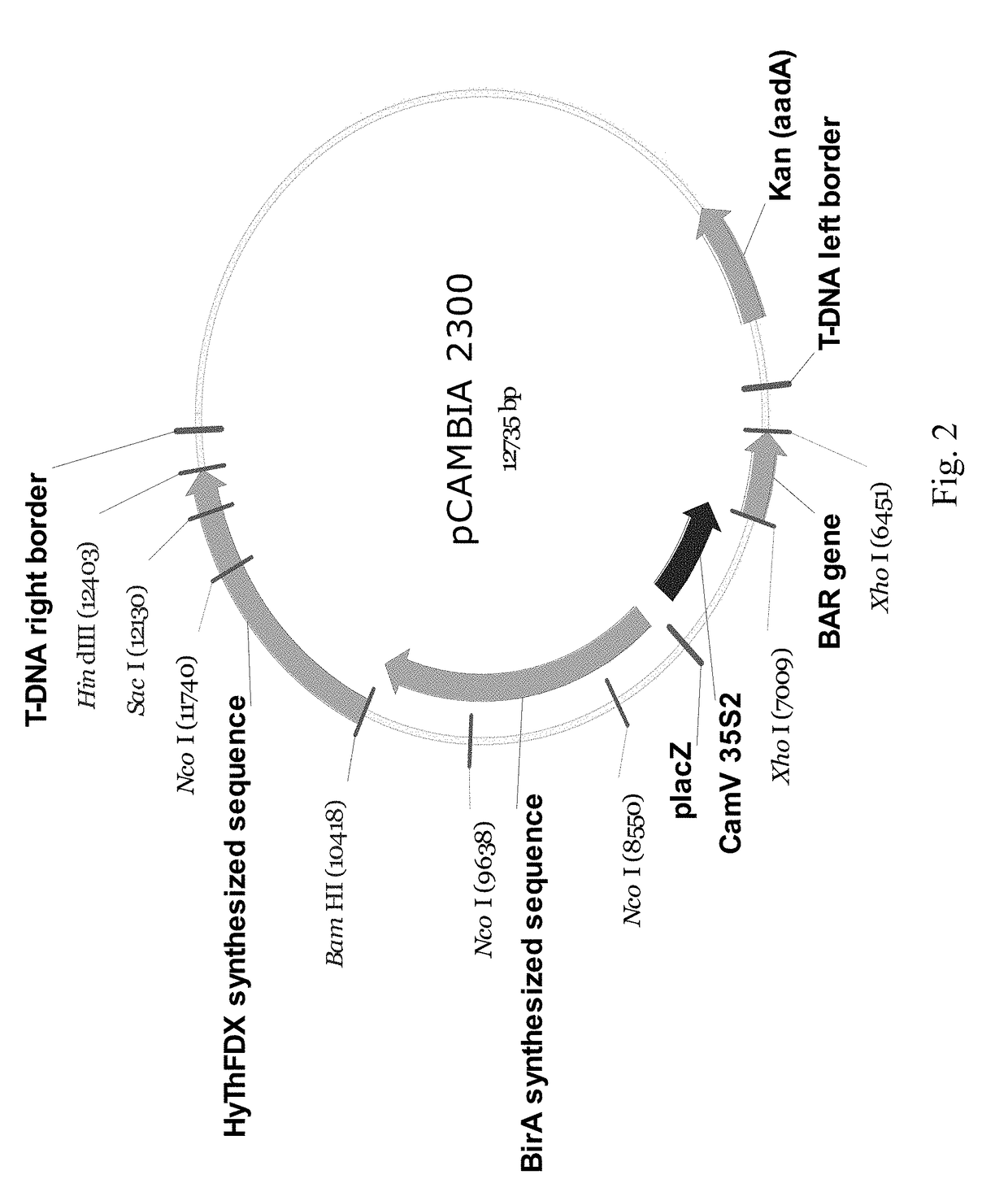Methods and compositions for enhanced biomass production and increased abiotic stress tolerance
a biomass and abiotic stress technology, applied in the direction of transferrins, ligases, animal/human proteins, etc., can solve the problems of csub>3/sub>plants not growing efficiently, net loss of carbon, and inefficient process, so as to improve the efficiency of co2 fixation and increase biomass production , the effect of increasing abiotic stress tolerance in plants
- Summary
- Abstract
- Description
- Claims
- Application Information
AI Technical Summary
Benefits of technology
Problems solved by technology
Method used
Image
Examples
example 1
Biological Carbon Sequestration in a Plant by Expression of Heterologous Ferredoxin and Biotin Ligase
[0159]A report (Jitrapakdee et al. Biochemical Journal, 413:369-387 (2010)) describing the structure of pyruvate carboxylase, an enzyme that is highly structurally related to OGC, demonstrates that the carboxylase enzyme is charged with biotin (see, FIG. 4 of Jitrapakdee et al.). Biotin is important because it holds the CO group before it is placed onto the substrate.
[0160]Without biotin, there is no carbon fixation. The carboxylase becomes charged with biotin in a post-translational modification, which is carried out by another protein known as Biotin Protein Ligase (E. coli) or Holocarboxylase Synthetase (Arabidopsis). Amino acid sequence alignments, as shown in FIG. 1, indicate that these two proteins share little sequence similarity, suggesting that the plant biotin ligase may not be able to properly biotinylate a bacterial enzyme.
[0161]In addition to the difference in the amino ...
example 2
Electron Transfer to Reduce Oxidative Stress
[0165]Under many environmental conditions electron transport can exceed ATP synthesis in the chloroplast and generate oxidative stress. Increasing the pool of ferredoxin by expression of a bacterial or archaeal ferredoxin, such as that from Escherichia coli, Rhodopseudomonas palustris, Methanosarcina acetivorans, Haloarcula japonica, Pyrococcus furiosus, Hydrogenobacter thermophilus, and / or Clostridium ljungdahlii in the chloroplast might enable an additional electron shunt to reduce the electron pressure at photosystem I and cyclic electron transport which would lead to further increase in the proton motive force across the thylakoid membrane. Expression of bacterial or archaeal ferredoxin ferredoxin may reduce oxidative stress.
[0166]Plants, such as camelina, are transformed using constructs comprising bacterial or archaeal ferredoxin such as, for example, Hydrogenobacter thermophilus ferredoxin, as described herein, thereby reducing oxid...
example 4
[0169]Plant biomass and productivity are limited by the amount of carbon the plant is capable of incorporating through the Calvin Benson-Bassham cycle. To augment carbon fixation in the chloroplast, it has been suggested that alternative carbon fixation cycles could be employed (Bar-Even et al. 2010 Proc. Natl. Acad. Sci. U.S.A. 107, 8889-889). A promising cycle for this application is the condensed, reverse tricarboxylic acid (crTCA) cycle. This cycle is a shortened version of the reverse TCA cycle and consists of 4-5 enzymatic steps. The cycle begins with succinate, which is converted to succinyl-CoA by succinyl-CoA synthetase. The succinyl-CoA is then converted to 2-oxoglutarate with the fixation of CO2 and the oxidation of a ferredoxin by the enzyme 2-oxoglutarate:ferredoxin oxidoreductase (KOR). The 2-oxoglutarate is then carboxylated by either 2-oxoglutarate carboxylase or isocitrate dehydrogenase to form oxalosuccinate or isocitrate, respectively. The isocitrate is then cleav...
PUM
 Login to View More
Login to View More Abstract
Description
Claims
Application Information
 Login to View More
Login to View More - R&D
- Intellectual Property
- Life Sciences
- Materials
- Tech Scout
- Unparalleled Data Quality
- Higher Quality Content
- 60% Fewer Hallucinations
Browse by: Latest US Patents, China's latest patents, Technical Efficacy Thesaurus, Application Domain, Technology Topic, Popular Technical Reports.
© 2025 PatSnap. All rights reserved.Legal|Privacy policy|Modern Slavery Act Transparency Statement|Sitemap|About US| Contact US: help@patsnap.com



